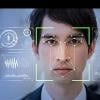Related Content
 |
NASA’s New Online Remote Sensing Toolkit Helps Spinoff Technologies Although the scientific community and other government agencies and nonprofit organizations have benefited from NASA’s policy of free and open remote-sensing data, the potential for commercial use has remained largely untapped. NASA’s Technology Transfer program hopes to change that. |
|
 |
Automated Executives: Software Moves into People Management Some tech companies have created their own automated managers—software that can handle administrative and workflow processes typically presided over by humans, but in a fraction of the time. With so many typical management tasks able to be automated, are bosses going to land on the endangered species list? Not so fast. |
|
 |
Engaging Developers in Unit Testing Unit testing is key for driving early defect identification, but organizations and teams continue to be challenged when it comes to designing and implementing unit tests. Realizing a culture of sound unit testing is often more a leadership challenge than a developer one. Here's how to instill a culture of unit testing. |
|
 |
Georgia Tech IoT Study: Takeaways for Smart Cities The internet of things has sky-high expectations, and smart cities, where devices connect across public and private sectors, is one of the drivers fueling the fervor. But there are also skeptics saying the IoT is slow to materialize, which poses questions about risks surrounding cyber security and privacy. |
|
 |
Microsoft Calls for Federal Regulation of Facial Recognition Microsoft has called for federal regulation of facial-recognition software, arguing that such artificial intelligence abilities are too significant and potentially dangerous for its purveyors to police themselves. The move comes amid public criticism of several tech giants over their use—and misuse—of the technology. |
|
 |
It's Time to Be Cautiously Optimistic about Artificial Intelligence Artificial intelligence (AI) is an ongoing trend today. However, the picture is not all rosy—even for the insiders who are heavily invested in this space. They are being cautiously optimistic about the potential it holds and the potential adverse impact if the threshold is exceeded. |
|
 |
The Test Automation Mindset Building a test automation strategy involves all members of the technical team, layering tests throughout the technology stack, and using this approach to design better software and catch simple problems earlier in the development cycle. But working like that requires a shift in mindset across the organization. |
|
 |
Testing Artificial Intelligence: How Low Can You Go? Artificial intelligence (AI) is propelling to the forefront once more. With the growing importance of AI comes the question: How do I test it? AI systems do not necessarily behave predictably. This means that traditional test cases of the form "do this, expect that" are not always sufficient. |






